It looks like you're using an Ad Blocker.
Please white-list or disable AboveTopSecret.com in your ad-blocking tool.
Thank you.
Some features of ATS will be disabled while you continue to use an ad-blocker.
share:
I have several “heroes,” as it is in the vernacular. You know, people that inspire and serve as role models. People I look up to and try to
emulate. Some are imaginary like Spider-Man and Fox Mulder. Some are actual personages like Mohandas Gandhi and John Lennon. When I am inspired by a
real person, I dig deep into the details of their life—I immerse myself in their art, contributions, and/or teachings. I sift through numerous
interviews, documentaries, biographies and memoirs in an attempt to learn who this person really was. I suppose it’s just a hollow attempt at
forging some connection between the ‘celebrity’ and the ‘fan.’
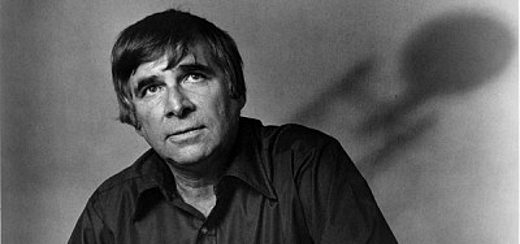
Gene Roddenberry—writer, dreamer, visionary, and futurist—is also one of my so-called “heroes.” I discovered the magic of Star Trek during my senior year of high school; a time when I had no friends, no faith in myself, and no conceivable future to work toward. As much as I loved the show and its themes, messages, and subtexts, I never really did learn much about Roddenberry himself.
Sure, entire discourses and lectures on the impact and significance of Star Trek as an entertainment, as a social phenomenon, and as a philosophy can be discussed. But most information about Gene himself can be fit onto a 5” x 3” index card.
We know the highlights. We know he was a man of discipline:
We know he was a decorated man in uniform:
We know he also had a creative streak:
And we know he heard the call of the storytelling muse:
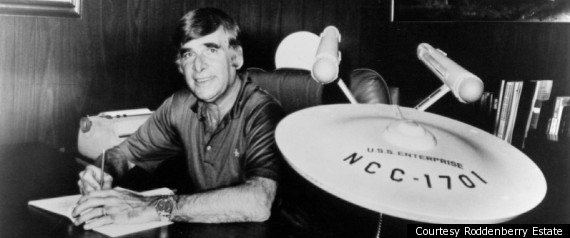
www.roddenberry.com...
You’d think somebody who inspired 4 spin-off television series to Star Trek, an animated cartoon series (more Trek), soon-to-be 12 Trek films (!), as well as lesser-known sci-fi series such as “Andromeda” and “Earth: Final Conflict,” would have a lot to say. Heck, even some his projects that never saw fruition found an audience in the form of comic book series bearing his name following his death.
Is personal information about Gene really so scant? Where’s the nitty-gritty? Where’s the juicy tidbits? Someone as successful, famous, and influential as Mr. Roddenberry must surely have a grand story to tell. What inspired him? What was he really trying to say with Star Trek?
To help make Star Trek accurate, Gene had a close working relationship with NASA, Lockheed, JPL—the list goes on!
thetruthseekersguide.blogspot.co.uk...
Not only was he consulting with these institutions. They were consulting with him as well.
thetruthseekersguide.blogspot.co.uk...
People were interested in what he had to say. Again, we’re talking about a television writer here.
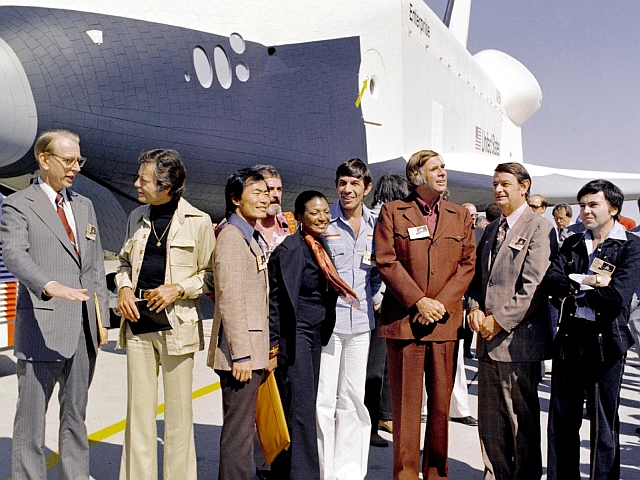
www.roddenberry.com...
I found a lengthy, in-depth interview with Gene during his last years of life. It mostly details his futurist-humanist philosophy, how he adopted this stance, and how he incorporated it into his shows. There are a few excerpts that particularly interested me.
First is his reverence for his dad who helped shape his own worldview. His dad also had an uncanny futurist outlook.
www.stjohns-chs.org...
(note: this source alone is worth hours of entertainment for Roddenberry fans!)
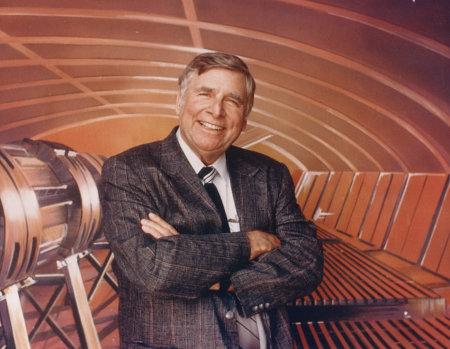
It was plenty obvious to everyone that Gene was ahead of the crowd. He also astounded people with his forward thinking, and his challenges to the status quo.
And just what was on Gene’s mind?
Did Gene really have a message he felt compelled to share?
www.stjohns-chs.org...
Then things got decidedly weird the deeper I probed. My google searches started turning up references to something called “The Council of Nine”—a group of paranormalists, channelers, and new-agers that also had a message to share.
This council had plans to prepare Earth for integration into a larger body of space-faring cultures, civilizations, and institutions. (Sound a little like the Federation, hmm?)
In the mid-70’s, Gene found his way into this group. It's known that Gene was involved with The Nine, but it isn’t exactly known to what level of intimacy they shared, or to what degree he was influenced by The Nine’s agenda.
secretsun.blogspot.com...
Here’s a little of what this “Nine” has to say:
www.theforbiddenknowledge.com...
Looking at this source is like looking at a list of names associated with The Nine. We find a network of people possibly influenced by this group such as Ira Einhorn, Dr. Sidney Gottlieb, and Richard Hoagland. The Nine’s influence is reported to have reached up the echelon as high as Gerald Ford and Al Gore.
secretsun.blogspot.com...
But what was Gene’s connection to this group?
www.forteantimes.com...
Although the supposed screenplay never saw completion, elements are said to be contained in other Roddenberry sci-fi stories.
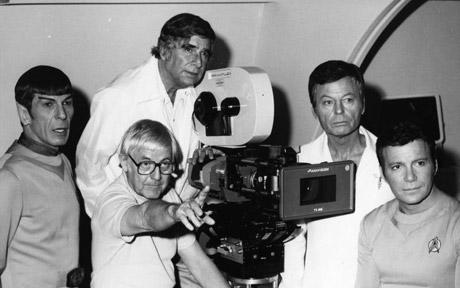
www.theforbiddenknowledge.com...
As a hardcore Trekker, I am a little skeptical of Gene having any influence on Deep Space 9, because he had already passed before the series went into pre-production. Unfortunately, it is difficult to know exactly how much Gene contributed to latter-day Star Trek and other sci-fi series, as he was mostly a consultant rather than a writer at that time. (It goes without saying that if any members have more info or insight on this thread and its direction, I want it shared!)
thetruthseekersguide.blogspot.co.uk...
Just what did Gene know and what was he trying to say? Referring back to his late interview, we can conclude that he took his sci-fi dramas very seriously and even commented that they were to prepare people for real life.
Okay, maybe I’m taking this quote way out of context, but I find it difficult to reconcile phrases like “trains..and prepares,” “they’re better prepared,” and “any other reason except preparing people” when talking about a fantastical science fiction program.
thetruthseekersguide.blogspot.co.uk...
Perhaps with a legend behind him as big as Star Trek, other invented myths were added to the epic. For example, Gene is said to be a high-ranking Freemason who used covert symbolism in his original series.
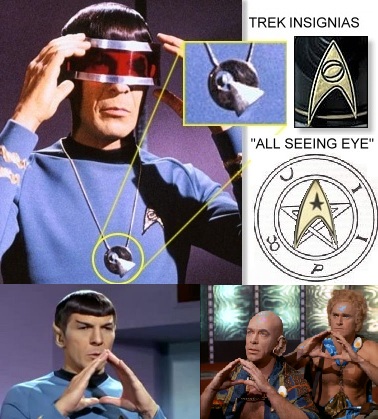
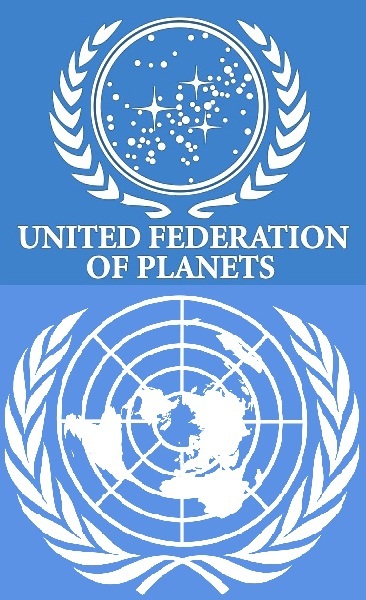
The mystery gets even deeper.
thetruthseekersguide.blogspot.co.uk...

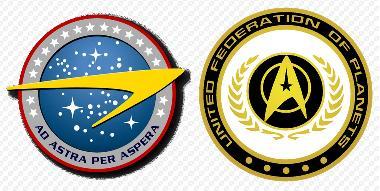
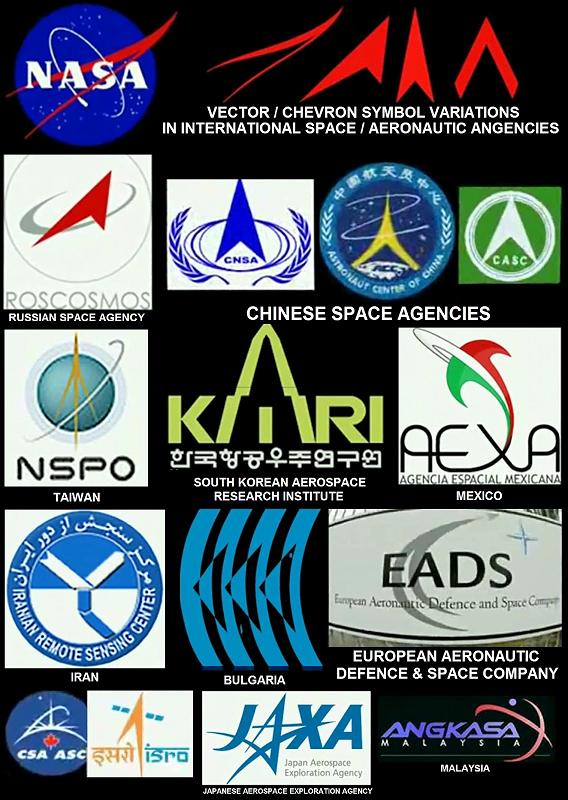
thetruthseekersguide.blogspot.co.uk...
(note: please check out all 3 parts of this source if you want to go the full depth behind the ‘Star Trek Conspiracy’)
The waters were again muddied when Gene’s son, Rod Roddenberry, introduced a new sci-fi comic strip called Gene’s Journal.
What’s the premise of this comic strip based on Gene’s actual childhood diary?


www.genesjournal.com...
Interesting to say the least. But it becomes even more intriguing in light of the fact that Gene’s reputation as an ahead-of-his-time thinker is not at all inaccurate. It is already well-documented what existing technology today was conceived by or inspired (or at least made popular) in some capacity by Gene et all, and dubbed “Treknobabble”
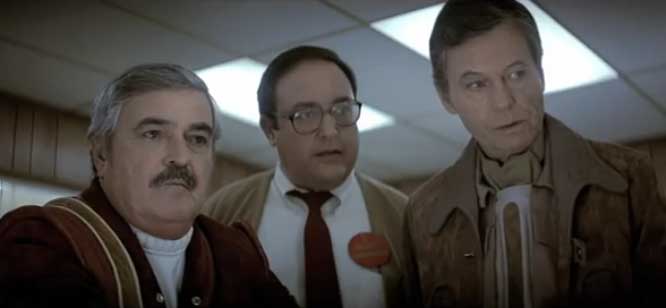
www.howstuffworks.com...=1

www.howstuffworks.com...=2
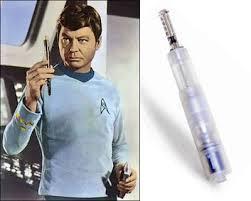
www.howstuffworks.com...=3
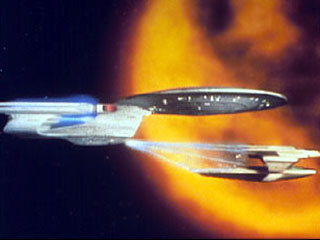
www.howstuffworks.com...=4

www.howstuffworks.com...=5
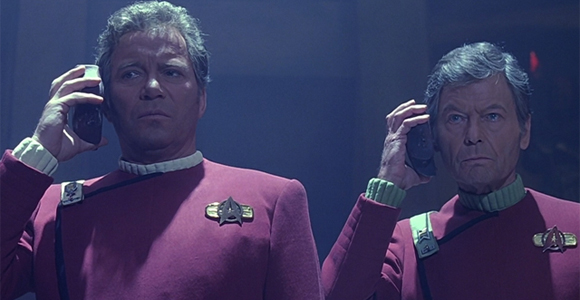
www.howstuffworks.com...=6
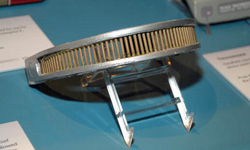
www.howstuffworks.com...=7
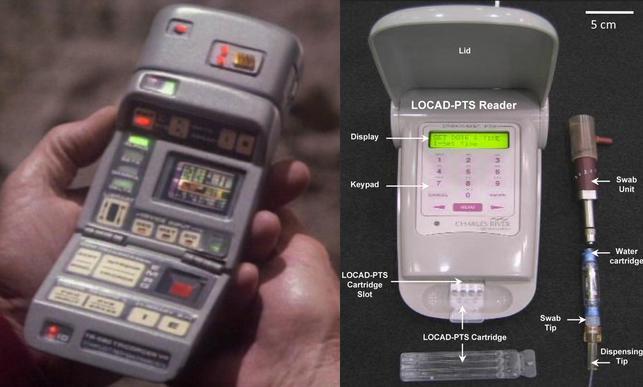
www.howstuffworks.com...=10
That’s some pretty impressive insight from such a simple man who doesn’t even consider himself worthy of being interviewed. Looks like Gene got his futurist knack from his dad after all. Oh, and things like flat screen TVs and compact discs were also the norm in Star Trek.
Although Gene simply called himself a writer—we can’t but help call him a visionary. There is just enough truth and coincidence to open the possibility that he may have known more than he let on. Recall back to his interview that he had some impending, unexpressed ideas that had to “wait until a certain level of thinking permit[ed] these things to be thought about openly…”
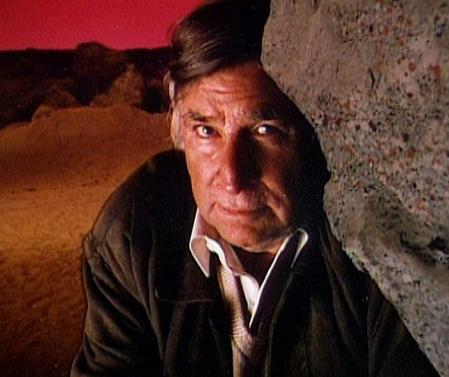
Perhaps the mystery shrouding Gene Roddenberry mostly has to do with his affiliation with the Lab 9 group. After all, they did approach him with the proposition of writing a script to “prepare” people for an inevitable alien contact. Gene didn’t say no. In fact, he worked with multiple drafts.
In a correspondence with a representative from Lab 9, Gene wrote:
Getting involved with this Lab 9 group raises all kinds of questions concerning Gene and just what he knew, or what he thought he knew, or what he learned after the fact.
www.theforbiddenknowledge.com...
At the end of the day, Gene Roddenberry called himself a writer and a humanist—nothing more. It is hard to ignore the possibility of several implications with his work though. He clearly was rubbing some pretty impressive shoulders during his career. He had a professional relationship with NASA and other institutions. He was introduced to a ‘new-age’ channeling group that were bent on fulfilling an agenda—and he even agreed to write the script that would get people ready to accept alien contact.
Was he just an insightful chap who hit upon the head of (several) possible future technologies conceived in Star Trek? Or did he know something we didn’t? What about this childhood diary that inspired a tale of alien abductions?
There are so many loose threads to this mystery and it’s ready to fall apart at the slightest tug. Are we simply looking at the embellished myth of an honestly down-to-earth man? Was Gene trying to entertain us, or pass along a message? Was he expressing a creative outlet, or was he advancing an agenda?
The intrigue surrounding his life, his career, and his colleagues certainly merits some attention.
Whatever this mystery entails, the work that Gene did earned him a commendation for public service…all for creating a television show and a pop-culture phenomenon.
thetruthseekersguide.blogspot.co.uk...
Thanks for reading. Hope you enjoyed. If you can, please add to this, my tip of the iceberg, thread which I'm burning to learn more about!
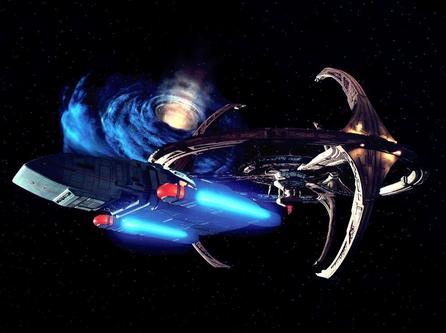

Gene Roddenberry—writer, dreamer, visionary, and futurist—is also one of my so-called “heroes.” I discovered the magic of Star Trek during my senior year of high school; a time when I had no friends, no faith in myself, and no conceivable future to work toward. As much as I loved the show and its themes, messages, and subtexts, I never really did learn much about Roddenberry himself.
Sure, entire discourses and lectures on the impact and significance of Star Trek as an entertainment, as a social phenomenon, and as a philosophy can be discussed. But most information about Gene himself can be fit onto a 5” x 3” index card.
We know the highlights. We know he was a man of discipline:
Gene spent his boyhood in Los Angeles, where he later studied three years of policemanship and then transferred his academic interest to aeronautical engineering and qualified for a pilot's license. He volunteered for the U.S. Army Air Corps in the fall of 1941 and was ordered into training as a flying cadet when the United States entered World War II.
We know he was a decorated man in uniform:
He flew nearly a hundred combat missions and sorties and was decorated with both the Distinguished Flying Cross and the Air Medal…Roddenberry later received a Civil Aeronautics commendation
We know he also had a creative streak:
in the South Pacific…Mr. Roddenberry began to write. He sold stories to flying magazines, and later poetry to publications, including The New York Times. He even wrote a song lyric "I Wanna Go Home", which became a popular song during the war.
And we know he heard the call of the storytelling muse:
Roddenberry continued flying until he saw television for the first time. Correctly estimating television's future, he realized that the new medium would need writers and decided that Hollywood's film studios would soon dominate the new industry. He acted immediately, left his flying career behind and went to Hollywood

www.roddenberry.com...
You’d think somebody who inspired 4 spin-off television series to Star Trek, an animated cartoon series (more Trek), soon-to-be 12 Trek films (!), as well as lesser-known sci-fi series such as “Andromeda” and “Earth: Final Conflict,” would have a lot to say. Heck, even some his projects that never saw fruition found an audience in the form of comic book series bearing his name following his death.
Is personal information about Gene really so scant? Where’s the nitty-gritty? Where’s the juicy tidbits? Someone as successful, famous, and influential as Mr. Roddenberry must surely have a grand story to tell. What inspired him? What was he really trying to say with Star Trek?
To help make Star Trek accurate, Gene had a close working relationship with NASA, Lockheed, JPL—the list goes on!
Roddenberry extensively consulted JPL scientists, Douglas and Lockheed engineers, USAF and RAND experts, and the engineers who worked on NASA’s unmanned space probe program.
thetruthseekersguide.blogspot.co.uk...
Not only was he consulting with these institutions. They were consulting with him as well.
The Enterprise bridge design attracted the attention of the US Navy, who dispatched three officers to the Star Trek soundstages. They were given extensive access and design blueprints, as well as the accumulated notes gathered from JPL, NASA, etc.
thetruthseekersguide.blogspot.co.uk...
People were interested in what he had to say. Again, we’re talking about a television writer here.
While making Star Trek, Roddenberry's reputation as a futurist began to grow. His papers and lectures earned him high professional regard as a visionary. He spoke on the subject at NASA meetings, the Smithsonian Institution, Library of Congress gatherings, and top universities.

www.roddenberry.com...
I found a lengthy, in-depth interview with Gene during his last years of life. It mostly details his futurist-humanist philosophy, how he adopted this stance, and how he incorporated it into his shows. There are a few excerpts that particularly interested me.
First is his reverence for his dad who helped shape his own worldview. His dad also had an uncanny futurist outlook.
Roddenberry: I’d like to say a few more things about him…He was advanced far beyond his time. Once he took me out to the front yard of our…house and said, "Gene, some day they’ll rip out whole blocks of the city and put gigantic highways through here." He was talking about the freeways that I later saw being built. He said this to me in the 1930s…
During World War II, while I was visiting home, Dad had shown me a newspaper report on how the Germans had broken through the Russian lines. Dad was looking it over and said, "I’ve spent some time in open country, and I know something about the military. I figure they’ll be stopped about here." He was pointing at Stalingrad…He was a shrewd analyst of world events.
www.stjohns-chs.org...
(note: this source alone is worth hours of entertainment for Roddenberry fans!)

It was plenty obvious to everyone that Gene was ahead of the crowd. He also astounded people with his forward thinking, and his challenges to the status quo.
Alexander: You came very close to getting out of television. You were very successful before Star Trek , but you were unhappy. Before Star Trek came along, you were about ready to pack it in if you couldn’t do what you wanted to do because of…?
Roddenberry: Censorship! Because of the fact that writers and producers are more or less expected, on network television, to perpetuate all of the modern myths: the male is vigorous, battle is the true test of a man (that was particularly so in Westerns), and stereotypes about men and women. If you don’t write them, people will stare at you askance and wonder, "What is he writing about?" It is only quite recently that we have had thoughtful writing about reality on television. Twenty-five years ago, and longer, it was next to impossible because first there were Westerns and then there were cop shows… Yes, I was just about to pack it in because there was no way I could write the things that were on my mind.
And just what was on Gene’s mind?
I remember, for example, saying to my mother one time, "Mom" (I must have been a teenager at the time), "as [sic] times I feel sometimes like I could do things and maybe the ideas I have are worth something to somebody." She turned to me with surprising ferocity and said, "No. You’re just like anybody else. Don’t talk about things like that because it’s foolish and nonsense."
Did Gene really have a message he felt compelled to share?
Alexander: Are there any subjects that you haven’t tackled on The Next Generation that you would like to?
Roddenberry: There are subjects, yes, but I will keep them secret, because you have to wait until a certain level of thinking permits these things to be thought about openly and in writing. I have many thoughts which, if I were to voice them now, would turn many people against me.
www.stjohns-chs.org...
Then things got decidedly weird the deeper I probed. My google searches started turning up references to something called “The Council of Nine”—a group of paranormalists, channelers, and new-agers that also had a message to share.
One New Age channeling cult, above all the rest, has had a huge - very disturbing influence on hundreds of thousands of devotees worldwide. Known as 'The Nine', its disciples include cutting edge scientists, multi-millionaire industrialists and leading politicians.
This council had plans to prepare Earth for integration into a larger body of space-faring cultures, civilizations, and institutions. (Sound a little like the Federation, hmm?)
In the mid-70’s, Gene found his way into this group. It's known that Gene was involved with The Nine, but it isn’t exactly known to what level of intimacy they shared, or to what degree he was influenced by The Nine’s agenda.
It's well known that Gene Roddenberry had extensive contacts with the Nine as did Jon Povill, who worked on the show Sliders as well as Synchromystic cult fave Total Recall.
secretsun.blogspot.com...
Here’s a little of what this “Nine” has to say:
I am the beginning. I am the end. I am the emissary. But the original time I was on the Planet Earth was 34,000 of your years ago. I am the balance. And when I say "I" - I mean because I am an emissary for The Nine. It is not I , but it is the group.We are nine principles of the Universe, yet together we are one.
www.theforbiddenknowledge.com...
Looking at this source is like looking at a list of names associated with The Nine. We find a network of people possibly influenced by this group such as Ira Einhorn, Dr. Sidney Gottlieb, and Richard Hoagland. The Nine’s influence is reported to have reached up the echelon as high as Gerald Ford and Al Gore.
And this was no ragtag bunch of hippie phreaks that Roddenberry was dealing with. According to Picknett and Prince, “the Nine's disciples included multimillionaire businessmen (many hiding behind pseudonyms and including members of Canada's richest family, the Bronfmans), European nobility, scientists from the Stanford Research Institute and at least one prominent political figure who was a personal friend of President Gerald Ford.”
secretsun.blogspot.com...
But what was Gene’s connection to this group?
he was approached with an unusual proposition by a wealthy Englishman called Sir John Whitmore.
Whitmore explained that he had sought out Roddenberry on behalf of an organisation calling itself Lab Nine. His proposal was that the TV producer and writer should pen a film screenplay based on the group’s research into the paranormal and its belief that Earth was soon to be visited by extraterrestrial beings traveling in spacecraft; Roddenberry, in other words, was to prepare the ground for the aliens’ arrival by writing a movie script that would prime the human race for first contact.
www.forteantimes.com...
Although the supposed screenplay never saw completion, elements are said to be contained in other Roddenberry sci-fi stories.
Roddenberry…even produced the screenplay for a movie about The Nine. How much he was influenced by them is unknown, although it is said that some of their concepts found their way into the early Star Trek movies, and The Next Generation and Deep Space Nine (what a giveaway!) series.

www.theforbiddenknowledge.com...
As a hardcore Trekker, I am a little skeptical of Gene having any influence on Deep Space 9, because he had already passed before the series went into pre-production. Unfortunately, it is difficult to know exactly how much Gene contributed to latter-day Star Trek and other sci-fi series, as he was mostly a consultant rather than a writer at that time. (It goes without saying that if any members have more info or insight on this thread and its direction, I want it shared!)
Even in the 1980s/90s, he was documented as working on Trek related projects with the likes of Sean David Morton – of ‘Dulce’/Area 51 fame. The influence of his Lab9 experiences continues to be seen in his latter science fiction creations such as his aborted “Planet Earth” pilot and the series “Earth: Final Conflict”.
thetruthseekersguide.blogspot.co.uk...
Just what did Gene know and what was he trying to say? Referring back to his late interview, we can conclude that he took his sci-fi dramas very seriously and even commented that they were to prepare people for real life.
Roddenberry: Because what we try to do in fiction is to present people of all ages with many aspects of life. In a way, this trains them and prepares them for the multiple choices and decisions they have to make during their own lives. The more young people see honest shows, the better they’re prepared. I can’t imagine making television for almost any other reason except preparing people for life’s travails and excitements.
Okay, maybe I’m taking this quote way out of context, but I find it difficult to reconcile phrases like “trains..and prepares,” “they’re better prepared,” and “any other reason except preparing people” when talking about a fantastical science fiction program.
He is known to have favoured Science Fiction as a means to comment on the human condition because these hidden messages often escaped the censors.
thetruthseekersguide.blogspot.co.uk...
Perhaps with a legend behind him as big as Star Trek, other invented myths were added to the epic. For example, Gene is said to be a high-ranking Freemason who used covert symbolism in his original series.
On a more esoteric level, the original series is littered with (what some refer to as “illuminati”) symbolism.


The mystery gets even deeper.
Matilda O'Donnell MacElroy – who claimed to have interviewed an alien during the Roswell Incident of 1947…has several references to the concept of the “Council of Nine” and mention of a symbol that was ‘shown’ to her by the creature. The symbol is used throughout the design of the book and is eerily identical to the Starfleet insignia.
thetruthseekersguide.blogspot.co.uk...


I have often found it curious that more people haven’t noticed the continued similarity in the logos of the branches of the Department of Defence – in relation to Star Trek. The various branches of NASA, JPL, Aerospace, Space Defence, and so forth, all incorporate the chevron aspect to their logos. This is also true of the space agencies of numerous nations across the world. It is the same chevron that has become synonymous with ‘Trek’. We really should ask the question – why?

thetruthseekersguide.blogspot.co.uk...
(note: please check out all 3 parts of this source if you want to go the full depth behind the ‘Star Trek Conspiracy’)
The waters were again muddied when Gene’s son, Rod Roddenberry, introduced a new sci-fi comic strip called Gene’s Journal.
In addition to running a foundation for science and clean oceans there are several “projects” that the group produces. One of them is Gene’s Journal…Based on a childhood journal that Gene Roddenberry left behind
What’s the premise of this comic strip based on Gene’s actual childhood diary?
Gene’s Journal® is the untold, true story behind the adolescent years of Gene Roddenberry. It was during these years that Gene was continuously abducted by aliens for the extraterrestrial purpose of studying human beings


www.genesjournal.com...
Interesting to say the least. But it becomes even more intriguing in light of the fact that Gene’s reputation as an ahead-of-his-time thinker is not at all inaccurate. It is already well-documented what existing technology today was conceived by or inspired (or at least made popular) in some capacity by Gene et all, and dubbed “Treknobabble”
how many of you remember Scotty introducing transparent aluminum for the first time?...
It may sound impossible, but there is such a thing as transparent aluminum armor or aluminum oxynitride (ALON) as it's more commonly known. ALON is a ceramic material that starts out as a powder before heat and pressure turn it into a crystalline form similar to glass. Once in the crystalline form, the material is strong enough to withstand bullets. Polishing the molded ALON strengthens the material even more. The Air Force has tested the material in hopes of replacing windows and canopies in its aircraft. Transparent aluminum armor is lighter and stronger than bulletproof glass.

www.howstuffworks.com...=1
Fast forward 30 years and wouldn't you know it, it seems like everyone carries a communicator. We just know them as cell phones.

www.howstuffworks.com...=2
Hypospray is a form of hypodermic injection of medication. A hypospray injection is forced under the skin (a subcutaneous injection) with high air pressure. The air pressure shoots the liquid vaccine deep enough into the skin that no needle is required. The real-world application is known as a jet injector.

www.howstuffworks.com...=3
In science fiction, space ships including the Starship Enterprise snatch each other up using tractor beams…
Scientists have harnessed small lasers into beams capable of manipulating molecules and moving them with precision. Optical tweezers use a focused laser to trap and suspend microscopic particles in an optical trap. Scientists can use optical tweezers to trap and remove bacteria and sort cells. Optical tweezers are used primarily in studying the physical properties of DNA. While the beams used in optical tweezers aren't strong enough to dock the space shuttle to the International Space Station, it's a start in that direction.

www.howstuffworks.com...=4
"Set phasers to stun"…
Unlike the phaser, the Taser and other stun guns must come in physical contact with the target in order to have any effect. Tasers take care of this by projecting two electrodes, connected by wires, which attach to the target's skin. Once in contact, the handheld unit transfers electricity to the target, thus having the stun effect.

www.howstuffworks.com...=5
The characters in "Star Trek" relied on a small device that when spoken into, would translate the words into English. Guess what? The technology exists for us in the real world. There are devices that let you speak phrases in English and it will spit back to you the same rhetoric in a specified language. The only problem is, these devices only work for certain predetermined languages.
A true universal translator like the one on the show may not be a reality, but the technology is available. Voice recognition has advanced considerably since its inception.

www.howstuffworks.com...=6
In 2005, a team of scientists from Stanford University successfully implanted a small chip behind the retina of blind rats that enabled them to pass a vision recognition test. The science behind the implants, or bionic eyes as they're commonly referred to, works much the way Geordi's VISOR did.

www.howstuffworks.com...=7
Often times the tricorder gave an initial analysis of the new environment. So, what's the real-world tie-in? NASA employs a handheld device called LOCAD, which measures for unwanted microorganisms such as E. coli, fungi and salmonella onboard the International Space Station [source: Coulter]. Beyond that, two handheld medical devices may soon help doctors examine blood flow and check for cancer, diabetes or bacterial infection.

www.howstuffworks.com...=10
That’s some pretty impressive insight from such a simple man who doesn’t even consider himself worthy of being interviewed. Looks like Gene got his futurist knack from his dad after all. Oh, and things like flat screen TVs and compact discs were also the norm in Star Trek.
Although Gene simply called himself a writer—we can’t but help call him a visionary. There is just enough truth and coincidence to open the possibility that he may have known more than he let on. Recall back to his interview that he had some impending, unexpressed ideas that had to “wait until a certain level of thinking permit[ed] these things to be thought about openly…”

Perhaps the mystery shrouding Gene Roddenberry mostly has to do with his affiliation with the Lab 9 group. After all, they did approach him with the proposition of writing a script to “prepare” people for an inevitable alien contact. Gene didn’t say no. In fact, he worked with multiple drafts.
In a correspondence with a representative from Lab 9, Gene wrote:
I’ve never seen any proof, or at least anything I recognise as proof, that other intelligent life forms exist, or are or have been in contact with us. Nor have I ever seen anything I recognise as proof that other laws of physics exist.” [7]
‘Proof’ was clearly what was required to penetrate Roddenberry’s sceptical defences,
and get him on-message, so Whitmore arranged an expenses-paid tour of a number of parapsychology departments and research facilities across the country to observe scientific investigation of the paranormal at first hand. And Roddenberry was invited to spend time both at Whitmore’s home in England and at Lab Nine itself while he spent the autumn of 1975 working on the draft screenplay.
Getting involved with this Lab 9 group raises all kinds of questions concerning Gene and just what he knew, or what he thought he knew, or what he learned after the fact.
Perhaps the most disturbing aspect of the history of The Nine is its relationship to the career of Andrija Puharich. Recent research has revealed Puharich to have a distinctly sinister side. As an Army doctor in the 1950s, he was deeply involved with the CIA's notorious MKULTRA mind control project (see panel). He - together with the infamous Dr Sidney Gottlieb - experimented with a variety of techniques to change or induce actual thought processes.
www.theforbiddenknowledge.com...
At the end of the day, Gene Roddenberry called himself a writer and a humanist—nothing more. It is hard to ignore the possibility of several implications with his work though. He clearly was rubbing some pretty impressive shoulders during his career. He had a professional relationship with NASA and other institutions. He was introduced to a ‘new-age’ channeling group that were bent on fulfilling an agenda—and he even agreed to write the script that would get people ready to accept alien contact.
Was he just an insightful chap who hit upon the head of (several) possible future technologies conceived in Star Trek? Or did he know something we didn’t? What about this childhood diary that inspired a tale of alien abductions?
There are so many loose threads to this mystery and it’s ready to fall apart at the slightest tug. Are we simply looking at the embellished myth of an honestly down-to-earth man? Was Gene trying to entertain us, or pass along a message? Was he expressing a creative outlet, or was he advancing an agenda?
The intrigue surrounding his life, his career, and his colleagues certainly merits some attention.
Whatever this mystery entails, the work that Gene did earned him a commendation for public service…all for creating a television show and a pop-culture phenomenon.
NASA posthumously awarded him the Public Service Medal in 1992. It seems that Star Trek was considered “a job, well done” by those in the military/industrial establishment.
thetruthseekersguide.blogspot.co.uk...
Thanks for reading. Hope you enjoyed. If you can, please add to this, my tip of the iceberg, thread which I'm burning to learn more about!

edit on 10-4-2013 by NarcolepticBuddha because: (no reason given)
Was he just an insightful chap who hit upon the head of (several) possible future technologies conceived in Star Trek? Or did he know something we didn’t? What about this childhood diary that inspired a tale of alien abductions?
There are so many loose threads to this mystery and it’s ready to fall apart at the slightest tug. Are we simply looking at the embellished myth of an honestly down-to-earth man? Was Gene trying to entertain us, or pass along a message? Was he expressing a creative outlet, or was he advancing an agenda?
He was both insightful and he knew things we didn't, is what I gather. As to the technologies conceived, mostly manifest based on experience and passion. Of course he spoke with members of groups that have alternative ideas and beliefs, that's what many artists do, and that's what his interests are. There's no way someone comes up with Q, and doesn't have some interesting conversations with some interesting people. With his experiences in the early years, his supposed 'freemasonry' connection, and his popularity, he could have spoken with the most influential, wealthiest, and craziest of individuals. Haven't many claimed that 'freemasonry' and NASA in fact have many ties?
I think it's embellished, but still contains truths with in. He most likely was down-to-earth man, trying to entertain, being creative. At the same time, there's messages in all his works, and that's what writers do, more so I'd imagine if one were a Freemason. Advancing an agenda, maybe, but one I'd imagine primarily his own.
THank you for the amazing thread, must have taken some time! S&F's and hopefully an applause
*claps hands*
edit on 10-4-2013 by retirednature because: (no reason given)
To give example, I have had some interesting conversations on ATS, all of which gave me the following ideas, which I imagine will be adopted in some shape or form:
Robots as firemen... which gets even better when you give them ________ wait for it!!!!
Combustion Driven Vortex Cannon's that incorporate a nozzle near the barrel that allows for a flame retardant chemical can be introduced to the moving volume of air!
Tractor beam for pulling particles from higher in the atmosphere to be used as energy
**"They could continuously and remotely capture particles over a longer period of time, which would enhance science goals and reduce mission risk," Stysley said. ** crap! NASA 1 ME 0 lol
Plasma Actuator Wings, that are an array of actuators and remove most of the wings surface area itself.
I could go on for days lol. Not too difficult really, just pull form what exists, either make it smaller, more mobile, or just think outside the box in an all around applied sciences type of fashion.
edit on 10-4-2013 by retirednature because: additional statement
edit on
10-4-2013 by retirednature because: additional statement
reply to post by NarcolepticBuddha
Epic thread OP,
The Council of Nine was a group of channeled entities that Roddenberry came in to contact with in the early 1970s when he was regularly attending the channeling sessions of Phyllis Schlemmer. Schlemmer was channeling a spirit guide she called 'Tom' who reveled himself, through Schlemmer, to be a spokesperson for the Council of Nine.
Schlemmer shared some of the details of the sessions that involved Roddenberry in her book, The Only Planet of Choice, and fragments can be found throughout the web...
This is a great thread you have put together and it will be fun to be along for the ride.
Epic thread OP,
something called “The Council of Nine”—a group of paranormalists, channelers, and new-agers
The Council of Nine was a group of channeled entities that Roddenberry came in to contact with in the early 1970s when he was regularly attending the channeling sessions of Phyllis Schlemmer. Schlemmer was channeling a spirit guide she called 'Tom' who reveled himself, through Schlemmer, to be a spokesperson for the Council of Nine.
Schlemmer shared some of the details of the sessions that involved Roddenberry in her book, The Only Planet of Choice, and fragments can be found throughout the web...
Gene: There's a question that I cannot avoid asking: why do you not give strong and definite signs of your existence or proximity, on top of approaching humanity by indirect means such as these channelings, or other ways? Obviously, you have your reasons, but this question does matter to me.
Tom: It is of great importance for you to understand that your governments of your world of Earth have refused to publicly believe, or convey to the people, our existence. If there were an attempt by civilisations to land upon Planet Earth in a mass situation, which in truth will come to pass in the course of time, the people upon Planet Earth would panic, for they have not the understanding, the knowledge, that we would mean no harm to them.......
www.oocities.org...
This is a great thread you have put together and it will be fun to be along for the ride.
edit on 10-4-2013 by Bybyots because:
reply to post by NarcolepticBuddha
I too think highly of Gene. He created a method of talking about current events in a way that was hard to argue about. The Original episode where the Aliens were half white and half black was a real zinger at the time. "He is black on his left side and white on the right side. We are white on the right side and black on the left. We are obviously more superior beings."
What I have always felt, even back when Star Trek was first shown, was that it did not go far enough forward in tech terms. Consider that we are only in 2013 and we have exceeded, immensely exceeded Captain Kirk's communicator. His did voice only. The one next to me does video, pics, data retrieval etc etc etc.
It was not until later that I came to realize that that was not a lack on the writers imaginations but rather, a lack of ability of the Producers and Corporate heads. Those idiots simply think that going too far puts people off. They do the public a disservice and insult our intelligence all in one go.
Some Writers though, made it through the gauntlet of stupidity and had some great forward looking works published, mainly in books.
One of the stalwarts of Science Fiction in the Sixties was Anne McCaffrey who wrote a book 'The Ship Who Sang" This not only showed a strong woman heroic figure but also allowed this figure to have her brain hard wired into the ship. In fact, she was the ship. This was forward thinking at its best but would only be available as a book and only by a well established and much loved author. I imagine that, at the time, a sexless female heroine would have given the movie moguls a heart attack.
Movies of late have caught up to some extent but still, very few deal with mind controlled ships and such like while current science is at this time making smallish strides in this direction.
It is sad to lose such visionaries as Gene and Anne but such is life.
P
I too think highly of Gene. He created a method of talking about current events in a way that was hard to argue about. The Original episode where the Aliens were half white and half black was a real zinger at the time. "He is black on his left side and white on the right side. We are white on the right side and black on the left. We are obviously more superior beings."
What I have always felt, even back when Star Trek was first shown, was that it did not go far enough forward in tech terms. Consider that we are only in 2013 and we have exceeded, immensely exceeded Captain Kirk's communicator. His did voice only. The one next to me does video, pics, data retrieval etc etc etc.
It was not until later that I came to realize that that was not a lack on the writers imaginations but rather, a lack of ability of the Producers and Corporate heads. Those idiots simply think that going too far puts people off. They do the public a disservice and insult our intelligence all in one go.
Some Writers though, made it through the gauntlet of stupidity and had some great forward looking works published, mainly in books.
One of the stalwarts of Science Fiction in the Sixties was Anne McCaffrey who wrote a book 'The Ship Who Sang" This not only showed a strong woman heroic figure but also allowed this figure to have her brain hard wired into the ship. In fact, she was the ship. This was forward thinking at its best but would only be available as a book and only by a well established and much loved author. I imagine that, at the time, a sexless female heroine would have given the movie moguls a heart attack.
Movies of late have caught up to some extent but still, very few deal with mind controlled ships and such like while current science is at this time making smallish strides in this direction.
It is sad to lose such visionaries as Gene and Anne but such is life.
P
The "Great Work" of the mysteries, particularly Freemasonry, represents social engineering (socialism) working toward the apotheosis of the race.
This social engineering is done through predictive programming which is a form of psychological conditioning provided by the media to indoctrinate the
public with planned societal changes to be implemented by the global elite. If and when these changes are put through, the public will already be
familiarized with and accepting of them; they will seem as ‘natural progressions’, thus lessening any possible public resistance and commotion.
If we understand that the serpent religions are all variants of pantheism - God in all/all is God - then we can identify Gene Roddenberry as a formative social engineer.
All of the Masonic and Kabalah imagery in the Star Trek movies was nothing more than mass conditioning of the world's populace. The theme of "galactic federation" is no different than Freemasonic "brotherhood of man", the united nations drive to eliminate national borders and to replace them with regional governments. Through tv and film, speaking images have been their method of imparting their anti-God doctrines into the minds of the west. God is now viewed as a "force", a spark of divinity everywhere including in man. We in the western world sit and listen to their esoteric beliefs every single day when we ingest what they feed us - speaking images. Our Creator warned us to stay away from images, but we threw that advice away along time ago. We closed the Bible and opened our minds and hearts up to the spoken images of the Kaballah. We are those crowds in Judea, converts made twice the children of hell through false teachings and the doctrines of men.
Today, the converts are the ones calling for and supporting the removal of Jesus Christ from every facet of their lives and are unknowingly demanding the release of Barabbas. Why? We are reasoning with minds filled with the doctrines of men.
Most yearn for a dream world given to them by these occultists, a united planet earth which can travel among the stars. Gene Roddenberry is yet another false prophet and false teacher that destroyed so many. He destroyed them through his very effective preaching. The media is the single largest and most influential PULPIT in the world. Unfortunately, it preaches everything adversarial to Our Creator. Those adversarial (satanic) teachings then seep into our minds and we use them to form our new beliefs by which we reason. Most will believe them instead of Our Creator, never understanding how the serpent recruited them into his armies which are today fighting Jesus Christ.
The world wants man glorified by man. The world wants man as god. Unfortunately, this is the mystery of iniquity rising at an alarming rate as the religions of the world quietly come together in oneness - particularly under mysticism - the altering of concioisness which produces visions and experiences by which these 'channeled entities' communicate to and through them. And many of the world leaders all have been pulled into it - seduced by their rhetoric. All occult writings for centuries have talked about this council of illuminated ones, and as this is the strong delusion allowed by Our Creator, we all must make a choice as to who to believe. Those who trip their minds and see hallucinations or Our Creator. Men like Roddenberry who placed these channeled writings into speaking images promoting a glorious future of united mankind, or your Creator whose words show that man will unite once again in a fight against His Christ, the very Saviour of mankind.
If we understand that the serpent religions are all variants of pantheism - God in all/all is God - then we can identify Gene Roddenberry as a formative social engineer.
"As nearly as I can concentrate on the question today, I believe I am God; certainly you are, I think we intelligent beings on this planet are all a piece of God, are becoming God." Interview with Gene Roddenberry in "Star Trek Creator" by David Alexander, Roc, an imprint of Dutton Signet a division of Penguin Books New York, page 568, par 1
All of the Masonic and Kabalah imagery in the Star Trek movies was nothing more than mass conditioning of the world's populace. The theme of "galactic federation" is no different than Freemasonic "brotherhood of man", the united nations drive to eliminate national borders and to replace them with regional governments. Through tv and film, speaking images have been their method of imparting their anti-God doctrines into the minds of the west. God is now viewed as a "force", a spark of divinity everywhere including in man. We in the western world sit and listen to their esoteric beliefs every single day when we ingest what they feed us - speaking images. Our Creator warned us to stay away from images, but we threw that advice away along time ago. We closed the Bible and opened our minds and hearts up to the spoken images of the Kaballah. We are those crowds in Judea, converts made twice the children of hell through false teachings and the doctrines of men.
Today, the converts are the ones calling for and supporting the removal of Jesus Christ from every facet of their lives and are unknowingly demanding the release of Barabbas. Why? We are reasoning with minds filled with the doctrines of men.
But turning and seeing his disciples, he rebuked Peter and said, “Get behind me, Satan! For you are not setting your mind on the things of God, but on the things of man.”
Most yearn for a dream world given to them by these occultists, a united planet earth which can travel among the stars. Gene Roddenberry is yet another false prophet and false teacher that destroyed so many. He destroyed them through his very effective preaching. The media is the single largest and most influential PULPIT in the world. Unfortunately, it preaches everything adversarial to Our Creator. Those adversarial (satanic) teachings then seep into our minds and we use them to form our new beliefs by which we reason. Most will believe them instead of Our Creator, never understanding how the serpent recruited them into his armies which are today fighting Jesus Christ.
The world wants man glorified by man. The world wants man as god. Unfortunately, this is the mystery of iniquity rising at an alarming rate as the religions of the world quietly come together in oneness - particularly under mysticism - the altering of concioisness which produces visions and experiences by which these 'channeled entities' communicate to and through them. And many of the world leaders all have been pulled into it - seduced by their rhetoric. All occult writings for centuries have talked about this council of illuminated ones, and as this is the strong delusion allowed by Our Creator, we all must make a choice as to who to believe. Those who trip their minds and see hallucinations or Our Creator. Men like Roddenberry who placed these channeled writings into speaking images promoting a glorious future of united mankind, or your Creator whose words show that man will unite once again in a fight against His Christ, the very Saviour of mankind.
Excellent thread, I enjoyed reading it.
I too am a fan of Star Trek and it's idealism. I don't have too much to add except:
Star Trek > Star Wars.
I too am a fan of Star Trek and it's idealism. I don't have too much to add except:
Star Trek > Star Wars.
Originally posted by TheComte
Excellent thread, I enjoyed reading it.
I too am a fan of Star Trek and it's idealism. I don't have too much to add except:
Star Trek > Star Wars.
Come now, Star Wars was really just a remake of the Arthurian legends. The special effects were legendary at that point in tech history but it really was just Great (or Geek) Knight saves Princess and slays Evil Dragon.
No point in even trying to compare the two.
Oh, I'm in for it now!
P
I didn’t have time to edit this back into the OP, but wanted to include it as an afterthought to anybody more interested in The Council of Nine.
Apparently the 9 Next Gen crew members were based on (or at least paralleled) the 9 otherworldly entities claiming to be the ancient Egyptian
pantheon.
secretsun.blogspot.com...
If anybody knows more about the mythology behind these figures, and how they might relate to Gene’s characters, please comment.
secretsun.blogspot.com...
If anybody knows more about the mythology behind these figures, and how they might relate to Gene’s characters, please comment.
• The new captain was intentionally designed as Roddenberry’s fantasy version of himself. The Star Trek creator wrote that Jean Luc Picard “is an older man, thoughtful, compassionate, hard but fair - and very irresistible to women.” Picard would be played by Patrick Stewart, no stranger to ritual drama himself, having already played in two separate Sun King films, Dune and Excalibur. Jean-Luc Picard would be the father-god Osiris, Zeus, Odin, Yahweh, or what have you.
• Picard’s Isis would be Dr. Beverly Crusher (Gates McFadden), a flame-haired Magdalene-type and the unrequited object of Picard’s affections. Like Isis, Beverly is also a widow and has a young son.
• Joining Picard would be hotheaded first mate Commander William Ryker (Jonathan Frakes), playing the part of Ra-Horus. Ryker would take over the fight-and-fornicate Captain Kirk role.
• Ryker’s Hathor would be Deanna Troi (Mirina Sirtis), the clairvoyant ships counselor. Deanna Troi’s name identifies her with the Moon goddess. Diana, goddess of the hunt, was identified with the Moon, and Troy was the city of Apollo, brother of Selene, the Moon goddess. In his original treatment, Roddenberry wrote that Troi’s alien race, the Betazoids, were said to “engage in almost constant sexual activity.”
• Acting as their Harpocrates would be young Wesley Crusher (Will Wheaton), who would often be the Enterprise’s savior, much to the consternation of many a Trekker. He even physically resembled a younger version of the “Horus the Elder” figure of Ryker.
• The guardian role of the dog-headed god Anubis would be played by the Klingon strongman Lt. Worf (Michael Dorn). Roddenberry was even kind enough to name him after a dog’s bark.
• Acting as the Thoth/Hermes messenger-cum-scribe of the Enterprise is the aptly-named android Data (Brent Spiner).
• And acting as the ship’s protective Sekhmet, or Athena, would be the security chief Natasha Yar (Denise Crosby).
• Rounding out ST:TNG’s starring cast was Geordie La Forge, the Enterprise’s Ptah. Or Hephaestus, in the Greek. Or Vulcan in the Roman, if you like. He is the craftsman, the engineer, the maker, the builder.
That’s nine major characters introduced in the first episode of ST:TNG, a “Council of Nine” if you will. And exactly like the fabled Council of Nine, the cast of ST:TNG all have corresponding deities in the Egyptian pantheon .
“Secularization does not mean a decline in the need for religion, but only a loss of power by traditional denominations. Studies of the geography of religion show that where the churches become weak, cults and occultism explode to fill the spiritual vacuum.” —
“Humanism is not new. It is, in fact, man’s second oldest faith. Its promise was whispered in the first days of Creation under the Tree of the knowledge of Good and Evil: ‘Ye shall be as gods.’“ (Qutd. in Baker 206)
Simply stated, humanism is the religion of self-deification. Its god is Man, spelled with a capital M to denote the purported divinity intrinsic to humanity. Of course, this was also the religion of Freemasonry. In fact, humanism and Masonry have shared a long historical relationship.The new Mason was no longer an architect of freestone. Instead, he was an architect of the technocratic Utopia mandated by Bacon’s New Atlantis. His god was Man himself, an emergent deity sculpted by the Kabbalistic golem of nature through the occult process of “becoming.” Of course, this concept would later be disseminated on the popular level as Darwinism and the world would call it “evolution.”
These humanist-Masonic concepts remain firmly embedded within the science fiction genre. In an interview with humanist David Alexander, Star Trek creator Gene Roddenberry commented:
“As nearly as I can concentrate on the question today, I believe I am God; certainly you are, I think we intelligent beings on this planet are all a piece of God, are becoming God.” (568)
“Science fiction has given the images, ‘evolution,’ has produced the philosophy, and the technology of the ‘space age’ has supplied the plausibility for such encounters.” (Rose 91)
wariscrime.com...
Those whom the occult channel in their shamanistic practices all preach the same message. This message has been imbedded within the science fiction field, weaving it's elaborate web of lies for a few centuries - its pagan belief that man will evolve to become god. Is it any wonder that consciousness altering techniques, which provide the same 'hidden knowledge', are flooding into our schools including primary schools, healthcare, psychiatry and corporate training departments under yoga and eastern meditation? The vacuum left by removing Jesus Christ is, as quoted above, simply replaced by occultism. Our society, thoroughly indoctrinated by science fiction fantasies, predictably programmed over the past decades to already believe occultist dogma, are now coming to believe that that dogma is true - never understanding how predictive programming works. Lying signs and wonders merely confirms the lies as truth. Our science falsely called is merely occultism disguised in scientific sounding terms. Our society reflects where we are going - psychic hotlines, speaking with the dead, ghost hunting shows, hedonistic tv exhalting sex, wealth and pleasure, popularity of werewolves and vampires, mystical visions, drug induced trips, aliens instead of fairies and leprechauns....we are merely reverting to the Middle Ages of superstition ruled by the occult.
reply to post by pheonix358
Thankfully we can compare new Star Wars to old (awesome) Star Wars. I recently posted in another thread that I became a Trekker not long after my astonishing disappointment with Phantom Menace onwards.
Star Trek = science fiction
Star Wars= space fantasy
We can't compare apples to oranges, now can we?
I will always be a die-hard Star Wars fan...just as soon as I can get Jar Jar Binks, Hayden Christiansen, and all the other CGI cheese out of my dvd copies
Until then..."Engage! Make it so!"
Thankfully we can compare new Star Wars to old (awesome) Star Wars. I recently posted in another thread that I became a Trekker not long after my astonishing disappointment with Phantom Menace onwards.
Star Trek = science fiction
Star Wars= space fantasy
We can't compare apples to oranges, now can we?
I will always be a die-hard Star Wars fan...just as soon as I can get Jar Jar Binks, Hayden Christiansen, and all the other CGI cheese out of my dvd copies
Until then..."Engage! Make it so!"
reply to post by NarcolepticBuddha
Excellent thread. I'm a Trekkie fan from way back and wasn't aware of any of this fascinating information you have collated for this thread. I did used to wonder where Gene Rodenbery got his inspiration for all the gadgets and even the names of the gadgets. Thank you for this thread. Am wondering now about the character "Seven of Nine" the ex-human assimilated by the Borg!!
Excellent thread. I'm a Trekkie fan from way back and wasn't aware of any of this fascinating information you have collated for this thread. I did used to wonder where Gene Rodenbery got his inspiration for all the gadgets and even the names of the gadgets. Thank you for this thread. Am wondering now about the character "Seven of Nine" the ex-human assimilated by the Borg!!
Originally posted by kiwitina948
Am wondering now about the character "Seven of Nine" the ex-human assimilated by the Borg!!
One of my cited sources does extend the mystery into post-Roddenberry incarnations of Star Trek. But don't forget that Gene was long gone by the time Deep Space Nine and Voyager (7 of 9 wasn't even an original character for this series) came into production. These were the shows of his successors. I doubt if he had any preliminary involvement in either series before his death...but that will probably take a true master of Trek trivia to answer. We'll have to wait for member Phantom Traveller to see this thread. She'll probably be able to help
The overall "Star Trek Conspiracy" is laid out on this website: thetruthseekersguide.blogspot.co.uk...
edit on 10-4-2013 by NarcolepticBuddha because: (no reason given)
reply to post by NarcolepticBuddha
I think he made some notes about DS9 and Voyager... not sure.
I identify with Sisko more than any other captain because of his experiences in the wormhole and the 'hero journey' motif.
How many Prophets are there in the wormhole, btw?
I did an I-Ching reading about the 9.
Cast Hexagram:
48 - Forty-Eight
Ching / The Well
Deep Waters Penetrated and drawn to the surface:
The Superior Person refreshes the people with constant encouragement to help one another.
Encampments, settlements, walled cities, whole empires may rise and fall, yet the Well at the center endures, never drying to dust, never overflowing.
It served those before and will serve those after.
Again and again you may draw from the Well, but if the bucket breaks or the rope is too short there will be misfortune.
SITUATION ANALYSIS:
There is a Source common to us all.
Jung named it the Collective Unconscious.
Others hail it as God within.
Inside each of us are dreamlike symbols and archetypes, emotions and instincts that we share with every other human being.
When we feel a lonely separateness from others, it is not because this Well within has dried up, but because we have lost the means to reach its waters.
You need to reclaim the tools necessary to penetrate to the depths of your fellows.
Then the bonds you build will be as timeless and inexhaustible as the Well that nourishes them.
I think he made some notes about DS9 and Voyager... not sure.
I identify with Sisko more than any other captain because of his experiences in the wormhole and the 'hero journey' motif.
How many Prophets are there in the wormhole, btw?
I did an I-Ching reading about the 9.
Cast Hexagram:
48 - Forty-Eight
Ching / The Well
Deep Waters Penetrated and drawn to the surface:
The Superior Person refreshes the people with constant encouragement to help one another.
Encampments, settlements, walled cities, whole empires may rise and fall, yet the Well at the center endures, never drying to dust, never overflowing.
It served those before and will serve those after.
Again and again you may draw from the Well, but if the bucket breaks or the rope is too short there will be misfortune.
SITUATION ANALYSIS:
There is a Source common to us all.
Jung named it the Collective Unconscious.
Others hail it as God within.
Inside each of us are dreamlike symbols and archetypes, emotions and instincts that we share with every other human being.
When we feel a lonely separateness from others, it is not because this Well within has dried up, but because we have lost the means to reach its waters.
You need to reclaim the tools necessary to penetrate to the depths of your fellows.
Then the bonds you build will be as timeless and inexhaustible as the Well that nourishes them.
reply to post by NarcolepticBuddha
I can hear Bones now telling Kirk about NarcolepticBuddha: "He's good, Jim!"
Thanks for this great thread, which I must read closely (personal disclosure, I once checked myself out of a hospital emergency room with double pneumonia to attend a Star Trek convention).
I can hear Bones now telling Kirk about NarcolepticBuddha: "He's good, Jim!"
Thanks for this great thread, which I must read closely (personal disclosure, I once checked myself out of a hospital emergency room with double pneumonia to attend a Star Trek convention).
Originally posted by BlueMule
How many Prophets are there in the wormhole, btw?
I don't remember if they said how many prophets lived in the wormhole. I do remember that they had those mystical orbs called 'tears of the prophets,' and that each had a specific divination purpose. Not surprisingly, there were nine of them.
Thanks for your interesting analysis.
I do know that 9 is the Chinese number of completion and fulfillment.
reply to post by NarcolepticBuddha
Fantastic thread.
I don't have anything to add, you said it all. Mr Roddenberry was,is and always will be an inspiration. In the star trek documentary "How William Shatner changed the world" many scientists and the inventor of the cell phone say that they were inspired by star trek. My good friend M. became a doctor because of Bones and there are countless people all over the world that chose their proffession based on their favorite Star Trek character.
A few of the cast and crew that i've met during conventions have only nice things to say about him and Marina Sirtis considers him, her second father.
BTW April 5th, we celebrated on Star Trek online the "First contact day", which is going to happen in exactly 50 years
Fantastic thread.
I don't have anything to add, you said it all. Mr Roddenberry was,is and always will be an inspiration. In the star trek documentary "How William Shatner changed the world" many scientists and the inventor of the cell phone say that they were inspired by star trek. My good friend M. became a doctor because of Bones and there are countless people all over the world that chose their proffession based on their favorite Star Trek character.
A few of the cast and crew that i've met during conventions have only nice things to say about him and Marina Sirtis considers him, her second father.
BTW April 5th, we celebrated on Star Trek online the "First contact day", which is going to happen in exactly 50 years
reply to post by Phantom traveller
Glad you approve
Is there anything you've heard about Gene and his involvement with the mysterious group that called itself Lab 9? Anything at all to tighten up this loose conspiracy I've clumsily cobbled together?
I'm really intrigued by this childhood diary that his son got a hold of. A comic strip about an adolescent Gene being continually abducted by aliens...said to be based of the actual diary nonetheless. That's pretty wild I got chills seeing the line "weird things happen to me."
If in the future you come across any info that supports this thread, or my admiration for the writer, please send it my way!
Glad you approve
Is there anything you've heard about Gene and his involvement with the mysterious group that called itself Lab 9? Anything at all to tighten up this loose conspiracy I've clumsily cobbled together?
I'm really intrigued by this childhood diary that his son got a hold of. A comic strip about an adolescent Gene being continually abducted by aliens...said to be based of the actual diary nonetheless. That's pretty wild I got chills seeing the line "weird things happen to me."
If in the future you come across any info that supports this thread, or my admiration for the writer, please send it my way!
edit on 10-4-2013 by NarcolepticBuddha because: (no reason given)
Originally posted by Aleister
reply to post by NarcolepticBuddha
I can hear Bones now telling Kirk about NarcolepticBuddha: "He's good, Jim!"
Thanks for this great thread, which I must read closely (personal disclosure, I once checked myself out of a hospital emergency room with double pneumonia to attend a Star Trek convention).
I never once heard Bones use that line. It was either "He's dead Jim," or sometimes with a surprised lilt to his voice as if he couldn't believe the writers put it in, "He's alive Jim."
It would have been Spock that may have said, "An interesting personality Jim, very thorough and highly thoughtful, almost Vulcan like!"
It is a great thread.
P
reply to post by kiwitina948
Seven of Nine was created by Brannon Braga when he saw a televised promotion for a "Borgish" tv show.He then got the idea of having a borg among the crew of Voyager or something like that i don't remember how exactly the story goes.
According to Braga she was going to have a tragic end, but i guess the fans wouldn't like that.
In the after-Voyager "official" timeline Seven becomes a member of the federation Borg task force, but when Starfleet disbanded it, Seven quit Starfleet and took a position in Daystrom institute.
Any other questions?
Am wondering now about the character "Seven of Nine" the ex-human assimilated by the Borg!!
Seven of Nine was created by Brannon Braga when he saw a televised promotion for a "Borgish" tv show.He then got the idea of having a borg among the crew of Voyager or something like that i don't remember how exactly the story goes.
According to Braga she was going to have a tragic end, but i guess the fans wouldn't like that.
In the after-Voyager "official" timeline Seven becomes a member of the federation Borg task force, but when Starfleet disbanded it, Seven quit Starfleet and took a position in Daystrom institute.
Any other questions?
Originally posted by pheonix358
It is a great thread.
Well, what am I--a doctor, or an ATS member?! Thank you for the kind compliment.
edit on 10-4-2013 by NarcolepticBuddha because: (no reason
given)
new topics
-
Oh, Good Gosh. “Kremlin Warns Stay Away from Greenland.”
World War Three: 18 minutes ago -
Archbisop Vigano Warns of Deep State and Deep Church
New World Order: 25 minutes ago -
A Flash of Beauty: Bigfoot Revealed ( documentary )
Cryptozoology: 6 hours ago -
Fire insurance in LA withdrawn months ago
General Conspiracies: 8 hours ago
top topics
-
Fire insurance in LA withdrawn months ago
General Conspiracies: 8 hours ago, 8 flags -
A Flash of Beauty: Bigfoot Revealed ( documentary )
Cryptozoology: 6 hours ago, 6 flags -
Bizarre Labour Party Tic Toc Video Becomes Even More Embarrassing
Regional Politics: 16 hours ago, 4 flags -
Oh, Good Gosh. “Kremlin Warns Stay Away from Greenland.”
World War Three: 18 minutes ago, 1 flags -
Archbisop Vigano Warns of Deep State and Deep Church
New World Order: 25 minutes ago, 0 flags
active topics
-
Fire insurance in LA withdrawn months ago
General Conspiracies • 25 • : CriticalStinker -
Oh, Good Gosh. “Kremlin Warns Stay Away from Greenland.”
World War Three • 5 • : Lazy88 -
Judge rules president-elect Donald Trump must be sentenced in 'hush money' trial
US Political Madness • 87 • : tkwaz -
Los Angeles brush fires latest: 2 blazes threaten structures, prompt evacuations
Mainstream News • 299 • : StoutBroux -
A Flash of Beauty: Bigfoot Revealed ( documentary )
Cryptozoology • 4 • : CosmicFocus -
Archbisop Vigano Warns of Deep State and Deep Church
New World Order • 0 • : FlyersFan -
Planned Civil War In Britain May Be Triggered Soon
Social Issues and Civil Unrest • 33 • : sapien1982 -
Steering the Titantic from the Drydock.
Rant • 47 • : andy06shake -
Trump says ownership of Greenland 'is an absolute necessity'
Other Current Events • 87 • : bastion -
Regent Street in #London has been evacuated due to a “bomb threat.”
Other Current Events • 8 • : TimBurr
